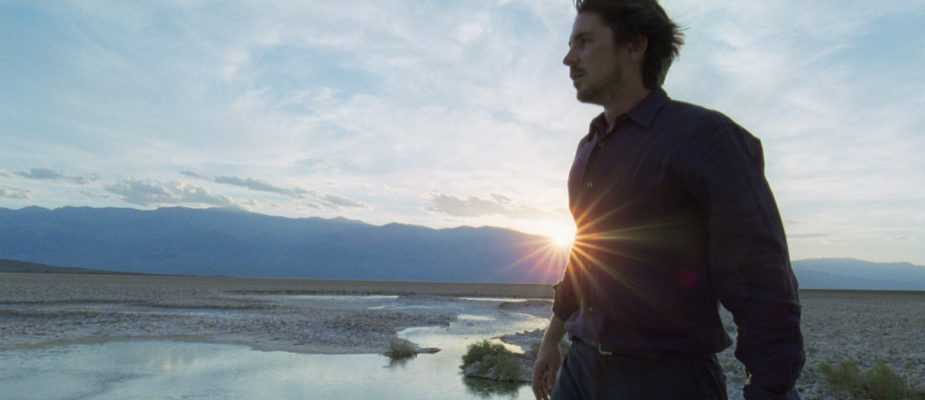Thanks to the continual health of the international art cinema, a deeper dive into recent Chinese independent filmmaking, key restorations, and a Jean Renoir program precipitated by the Museum’s “Matisse in His Time” exhibition, Oklahoma City audiences had many fine alternatives to the multiplex in 2016. Among the more than seventy new releases that Museum Films programmed during that time, standouts were plentiful and came from just about everywhere. Thailand produced the year’s best commercial release in Apichatpong Weerasethakul’s Cemetery of Splendor, an excavation of the unconscious that in part was about the humble conditions of its production. One of Apichatpong’s few contemporary peers, South Korea’s Hong Sang-soo, made one of his better films with Right Now, Wrong Then, a twice-told exploration of the subjective possibilities of storytelling and fictional truth. While in Japan, horror maestro Kiyoshi Kurosawa continued his recent return to form with Creepy.
Then there is China where there currently seems to be as much depth as anywhere outside of longtime cinematic superpowers United States and France. Museum Films’ “Marginal Geographies: Independent Masterworks from China” presented six films made during the past six years that uniformly show the incredible richness of the Mainland independent cinema in the early 21st century. All were absolute highlights of this year’s program: Tibetan filmmaker Pema Tseden’s modern humanist classics Old Dog (2011) and Tharlo (2015); revelation among revelations, Li Hongqi’s comically pitch-black Locarno prizewinner, Winter Vacation (2010); master documentarian Wang Bing’s signature Three Sisters (2012); Gan Bi’s formally adventurous first feature Kaili Blues (2015); and Zhang Yang’s hyper-cinematic Paths of the Soul (2015). My research for the program also led me to Wang’s period-defining, nine-hour exploration of China’s collapsing command economy, Tie Xi Qu: West of the Tracks (2002), and to his more recent masterstroke, ‘Til Madness Do Us Part (2013), which spends four hours in a grim state hospital; as well as to Diao Yi’nan’s very fine north China thriller, Black Coal, Thin Ice (2014), which is available on Netflix. For me, 2016 was the year that I finally caught up with an exceptionally diverse contemporary Mainland cinema–including an additional two titles at the very bottom of this post–beyond the corpus of the great Jia Zhangke.
Back to the Museum Films program, Europe produced many of this year’s better new releases including Chantal Akerman’s moving swan song, No Home Movie (Belgium); Corneliu Porumboiu’s The Treasure (Romania), which manages to subvert almost every storytelling explanation; Athina Rachel Tsangari’s take on masculine competition, Chevalier (Greece); Arnaud Desplechin’s latest foray into autobiography, My Golden Days (France); Terence Davies’s precise Sunset Song (United Kingdom); Nikolaus Geyrhalter’s surprise non-fiction hit, Homo Sapiens (Austria); José Luis Guerín’s searching The Academy of Muses (Spain); Gianfranco Rosi’s Berlin Golden Bear Fire at Sea (Italy); Andrew Haigh’s sensitive 45 Years (United Kingdom); and Deniz Gamze Ergüven’s first film Mustang (France/Turkey), which provided a solid start to last year’s Oscars programming.
American documentary film made a strong showing in the year’s first Museum Films release, fly-on-the-wall master Frederick Wiseman’s In Jackson Heights, and in this December’s modern essay-film classic, Cameraperson, directed by Kirsten Johnson. In fiction, my favorites were Terrence Malick’s hyper fragmented and boundlessly lyrical Knight of Cups, which remains my favorite American commercial release of 2016, and Ira Sachs’s Little Men, an exceptional American indie with a wise view toward Brooklyn gentrification. Other patron and critical favorites of the past twelve months include Kelly Reichardt’s distinctive Certain Women and Josh Kriegman and Elyse Steinberg’s evergreen Weiner. Beyond the walls of the Noble Theater, I was also most fond of the following of our competitors’ English-language releases, in approximate order of preference: Richard Linklater’s Everybody Wants Some!!, Joel and Ethan Coen’s Hail, Caesar!, Whit Stillman’s Love & Friendship, Robert Zemeckis’s Allied, Jaume Collet-Serra’s The Shallows, Kenneth Lonergan’s Manchester by the Sea, and Yorgos Lanthimos’s The Lobster.
Finally, Museum Films benefited from Janus’s restoration of two King Hu features, including the richly entertaining, new-to-me Dragon Inn (1967); and Sony Pictures and the Film Foundation’s 4K restoration of Tay Garnett’s Her Man (1930), an absolute marvel of long-take filmmaking and eloquent framing from the earliest years of sound cinema. Lastly, Museum Films programmed a series of Jean Renoir works under the “‘Impressionism multiplied by the cinema’: The Films of Jean Renoir” banner. Included among these was a 35mm presentation of the director’s supreme masterpiece, The Rules of the Game (1939), a longstanding favorite of not only mine but just about everyone who knows the film well. Seeing it fresh with more than ninety others in the Noble Theater, I was struck that Renoir’s film has more life in it than any other film I know. This late July screening was my highlight among highlights in 2016, the best film I saw in theaters all year.
Moving now from the best Oklahoma commercial releases and repertory programming of 2016 to the best world premieres, I have, for the first time, created a list in which none of my choices have opened commercially at home. Thankfully, that situation will begin to be rectified early next month when numbers nine and ten open at OKCMOA, with more to follow in the weeks and months ahead. Without further ado, my top ten films of 2016, with two runner-up double features:
 1. A Quiet Passion (Terence Davies, United Kingdom/Belgium) Premiering out of competition at last February’s Berlin Film Festival, A Quiet Passion was almost singular this year in its concern for the inner life of its protagonist. This heartrending Emily Dickinson biopic, starring Cynthia Nixon in a career-best performance, was also the year’s most bitterly–and courageously–personal piece of auteur filmmaker, an emotionally overwhelming confessional object from Davies (Distant Voices, Still Lives; Sunset Song), the greatest poet of the British screen since Humphrey Jennings.
1. A Quiet Passion (Terence Davies, United Kingdom/Belgium) Premiering out of competition at last February’s Berlin Film Festival, A Quiet Passion was almost singular this year in its concern for the inner life of its protagonist. This heartrending Emily Dickinson biopic, starring Cynthia Nixon in a career-best performance, was also the year’s most bitterly–and courageously–personal piece of auteur filmmaker, an emotionally overwhelming confessional object from Davies (Distant Voices, Still Lives; Sunset Song), the greatest poet of the British screen since Humphrey Jennings.
2. Sieranevada (Cristi Puiu, Romania) After a virtuosically choreographed, pre-credits long-take that ranks among the year’s most exceptional sequences, Romanian master Puiu sets up inside a Bucharest flat, his camera moving from room to room as he maps a cavernous domestic space, complicated familial relationships, and the history, politics, and religious attitudes of the post-Communist nation. The director’s darkly comedic reinterpretation of the chamber drama feels sui generis, even as it proves to be the natural extension of the occluded, outside-the-threshold aesthetic of his 2010 feature Aurora.
3. Toni Erdmann (Maren Ade, Germany) Few films in recent years have achieved the degree of critical consensus surrounding Toni Erdmann, a film that seems to have been loved by absolutely everyone (except for Cannes’s George Miller-led jury). Ade’s third feature ups the cringe-factor of her less unambiguously comedic, though every bit as sharply observed Everyone Else, and brings gross-out humor worthy of the Farrelly brothers, before shifting into a surrealist register that culminates in the most spectacularly costumed–and un-costumed–set-piece in ages.
4. Nocturama (Betrand Bonello, France/Germany/Belgium) Too controversial, seemingly, for Cannes, this immensely immersive fiction of an intricately plotted Parisian terrorist attack, and its symbolically meaningful dead-time aftermath, is real-world relevant filmmaking done in its provocateur-director Bonello’s inimitable, de-contextualized way–as the film’s memorable lip-sync set-piece suggests. In a French film industry that often seems incapable of escaping the lures of nostalgia, the invigorating Nocturama feels as of our world as any film this year.
5. Paterson (Jim Jarmusch, United States) One of Jarmusch’s most moving films, Paterson unfolds over the course of a single week in which mundane routine gradually breaks down, giving way to profound personal crisis by week’s end. At the center of it all is poet-bus driver Paterson (an exceptional Adam Driver), one of many twins–he shares his name with his hometown–who populate the Ohio-born director’s decaying, if warmly rendered working-class, Rust Belt setting.
6. Yourself and Yours (Hong Sang-soo, South Korea) At some point you would have to think that Hong will exhaust his signature story line, that he will no longer manage to make new his biographical template of artists, women, awkward conversation, and copious amounts of alcohol. Yourself and Yours confirms that we are certainly not there yet: borrowing his conceit from That Obscure Object of Desire, Hong’s looser, if even more emotionally satisfying latest turns, freshly, on the both/and possibilities of its storytelling.
7. A Lullaby to the Sorrowful Mystery (Lav Diaz, Philippines/Singapore) History, legend, mythology, and fiction all meld together in a single story world in Diaz’s mammoth, slow-cinema novelization of the years surrounding the Philippines’ struggle for independence. Sculpting time–eight hours worth–in exquisite, high-contrast black-and-white, Diaz grafts the myth of cinema’s concurrent origins onto this new direction for one of world cinema’s most unique artists.
8. The Ornithologist (João Pedro Rodrigues, Portugal/France/Brazil) One of the stronger provocations to debut in 2016, this Pasoliniesque Locarno premiere combines its autobiographical interests in bird-watching and the filmmaker’s sexuality with a Roman Catholic-inspired stations-of-cross-style narrative, where the film’s ornithologist is tested as much sexually as he is spiritually. Adding the AIDS subtext of To Die Like a Man, and its final-act transformation, The Ornithologist is a signature and very personal achievement from the Portuguese auteur.
9. Things to Come (Mia Hansen-Løve, France/Germany) Moving beyond the characteristic youth of her earlier work (Goodbye First Love, Eden), Things to Come elegantly explores the middle-aged anxieties of its newly single heroine, played by the iconic Isabelle Huppert in the first of her two magisterial 2016 performances (the second is mentioned in the runner-ups). Hansen-Løve’s personal film possesses a surfeit of digressive detail, taking its lead from the philosophically searching cinema of Eric Rohmer, and the similarly themed Certified Copy.
10. The Son of Joseph (Eugène Green, France/Belgium) The third French film on the list–there easily could have been more in this strong year for Gallic cinema–The Son of Joseph is archetypal Green: the characters, entangled in a comedic drama of paternity, declaim directly into the camera in the manner of the baroque theatre. At once devotional and irreverent, The Son of Joseph is the truly exceptional latest from one of the medium’s most joyfully anachronistic voices.
Runner-up double feature #1: Elle (Paul Verhoeven, France/Germany/Belgium) and The Salesman (Asghar Farhadi, Iran/France) Two vastly different takes on a similar generic subject, both supremely auteurist exercises. Making use of the video-game intertext that his narrative establishes, schlockmeister Verhoeven works with and against the veneer of bourgeois respectability in his provocative take on the rape-revenge thriller starring the great Huppert. Farhadi considers his own extremely melodramatic subject amidst the architecture and gendered mores that are both products of Iran’s theocratic society.
Runner-up double feature #2: Crosscurrent (Chao Yang, China) and Ta’ang (Wang Bing, Hong Kong/France) In the spirit of “Marginal Geographies,” the two 2016 features by Mainland filmmakers that not only most embody the thesis of the series–that a group of independent filmmakers have dedicated themselves to presenting the other, economically dispossessed China, outside the city’s major urban centers–but also have the greatest claim to being recognized as this year’s finest achievement from the world’s most populated nation. Crosscurrent is 2016’s most cartographic fiction, while the non-fiction Ta’ang brought the experiences of the most marginalized of all populations, a displaced group of refugees on the Myanmar-China border, to international festival audiences.










